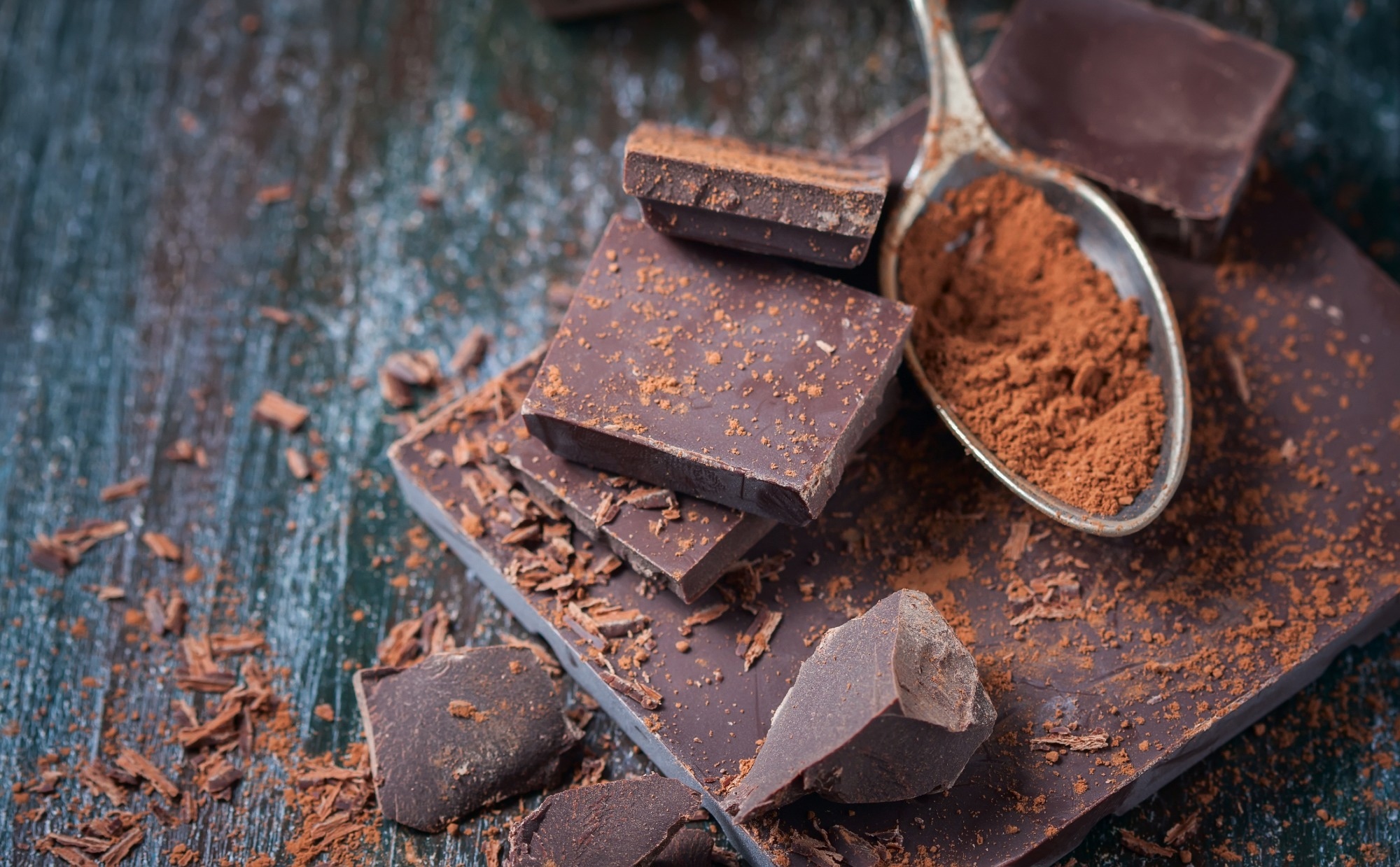In a recent study published in ACS Applied Materials & Interfaces, researchers performed an in situ tribomicroscopy to explore the lubrication mechanisms of edible PCM (phase change materials) using dark chocolate as an example. They did this at the mesoscale (single papilla on tongue) and macroscale (entire tongue) scale through different stages of oral processing on being mixed with a lubricant (saliva), i.e., the solid (licking stage), molten (initial mastication stage) and saliva-mixed (bolus before swallowing stage) stages.
 Study: Insights into the Multiscale Lubrication Mechanism of Edible Phase Change Materials. Image Credit: Gulsina/Shutterstock
Study: Insights into the Multiscale Lubrication Mechanism of Edible Phase Change Materials. Image Credit: Gulsina/Shutterstock
PCM materials are substances in which phase transitions occur during different processing stages. Investigation of PCM lubricity could be challenging in relative motion applications such as ice-skating, chocolate consumption, thermal storage, and PCM textiles. Oral tribological studies have reported phase transition often based on dynamic PCM-oral surface interactions at the mesoscale and spanning macroscale. However, PCM multiscale lubricity is not well-characterized.
About the study
In the present study, researchers proposed a multiscale tribology-informed smart design of chocolate based on the lubricity mechanisms at different stages of chocolate consumption, with their self-designed biomimetic three-dimensional surface of the human, emulating the surface topography, wettability, and deformability of the human tongue.
The solid lubrication behaviour of the dark chocolates was investigated and exploited to yield insights into the chocolate processing by the oral cavity. The team assessed the interplay between solid lubricity, aqueous lubricity, hydrodynamic forces, and particle entrainment in terms of processing stage and speed. Four commercial ‘dark chocolate’ samples were used comprising 70 wt% to 99 wt% cocoa. The team prepared model saliva using porcine gastric mucins (PGM) type II, MUC5AC and MUC6, and 3.0 wt% PGM was utilized to produce saliva of similar viscosity as human saliva.
The blend of dark chocolate and the modelled saliva (chocolate-S) were prepared in a 1:1 wt percent ratio at 37 °C (oral physiological temperature). Every blend weighed nearly 30 grams in the liquified stage. A master mould or negative impression of the tongue was fabricated using acrylic resin by three-dimensional printing, followed by the generation of the tongue replica or positive impression, which was decontaminated using deionized water and isopropyl alcohol.
The human tongue-simulated elastomeric modelled surfaces comprised randomly oriented fungiform and filiform papillae, simulating real tongue characteristics in terms of surface topography (papillae size, distribution, mechanical properties, and wettability). Confocal scanning laser microscopy was performed to examine chocolate-S microstructures, and the tribological performances, including frictional properties, were evaluated. In addition, ATR-FTIR (attenuated total reflection-Fourier transform infrared) spectroscopy was performed.
Results
The study findings were per transcending theories of lubrication. They revealed a shift in tribological mechanisms during licking from the fat-dominant/saliva-poor solid stage lubrication to aqueous/saliva-dominant lubrication, the latter resulting in ≥3.0-fold-greater coefficient of friction (µ). At the single-papilla scale, the dominant lubrication mechanism involved cocoa butter bridging between tightly-packed particles of cocoa (which was impaired at higher µ values) and the coalescence of fat droplets during the initial masticatory stage and the bolus before the swallowing stage, respectively.
Entire-tongue scale findings showed a distinct hydrodynamic film formation at the contacting interface, with hydrodynamic forces resulting from increased chocolate viscosity. The findings indicated that the classical lubrication theories could not completely explain the tribological behaviour of chocolates. The findings indicated that if a fat-enriched layer saturates the chocolate surface, saliva might be unable to suppress the layer or generate an aqueous film. A soft cocoa-butter-coating at the contacting interface of cocoa particles could eliminate the friction-enhancing nature of entrained cocoa particles and improve the mouthfeel of chocolates.
The tribological differences between the chocolates could not be attributed to the particle size. Cocoa particle confinement at the contact interface was noted for chocolates but not for chocolate-S samples. The solid particles (except for 99.0%) could not entrain into or out of the contacting interface. An interplay between the fat composition, solid viscous forces, and particles determined the friction properties of chocolates. At the macroscale, a stable contact was noted between the simulated fungiform-type papillae and the counter body in the monotonous coefficient of friction regime.
Chocolates with greater fat content demonstrated lesser μ values, indicative of a potential fat-driven lubrication mechanism, corroborating the linking effects shown by cocoa butter, that facilitated lubrication and decreased direct contacts between solid cocoa particles and PoG (P probe on G disc) surface configuration. The mesoscale findings indicated that contact loads were in part buttressed by a thin and continuous cocoa butter film, and hydrodynamic lubricity, that completely separated the surfaces by cocoa butter. Greater fat content delayed the direct physical contact between solid particles of cocoa and the contacting surfaces.
At both scales, a steep elevation of 99.0% in µ values (indicating solid particle entrainment, increased friction and sandy or gritty perception of chocolate), and a negative association between the content of fat and the frictional coefficient, was observed. The minimum film thickness at any entrainment speed for chocolate was comparable at the two scales. A noteworthy tribological contact-induced structural conversion was noted in chocolate-S during the saliva-mixed stage. The tribological contact initiated the formation of extremely large cocoa particle-laden coalesced droplets of oil, sized between 200 μm and 1.0 mm.
Overall, the study findings showed that future chocolates must incorporate a fat gradient with greater surface fat and lesser bulk fat for improved oral sensory perception, comprising particles of cocoa coated by fat. The findings could inform the rational design of next-generation phase-change materials and solid particle-comprising substances.